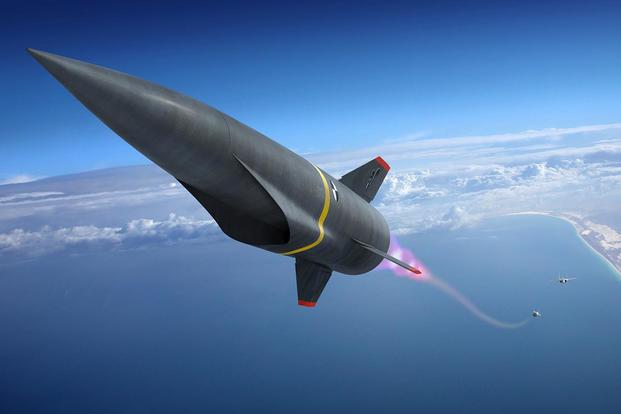The U.S. Air Force is expanding its hypersonic testing facilities, relying on university partnerships for its future wind tunnel experiments.
Purdue University and the University of Notre Dame, both in Indiana, are building a series of new wind tunnels for hypersonic technology testing, according to service spokeswoman Ann Stefanek.
The Air Force's goal is to get more testing done in quiet wind tunnels.
"A quiet wind tunnel is one designed to minimize freestream disturbances and yield more accurate aerothermodynamics predictions," Stefanek said in an email Friday.
Related content:
- Pentagon Aims to Win Global Race for New Hypersonic Technologies
- Air Force Doubles Down on Hypersonic Weapons Development with 2nd Contract
- Air Force Wants to Invest Heavily in Next-Gen Technologies
The universities already have one hypersonic testing tunnel each and are building additional tunnels for their aerospace research alongside the service.
A newly constructed tunnel at Notre Dame, which the university unveiled last year, was built with basic research funding from the Air Force Office of Scientific Research, via the Defense University Research Instrumentation program, Stefanek said.
The Notre Dame's tunnel "is double the diameter of the two other 'quiet' hypersonic wind tunnels in the U.S.," she said. Those tunnels are located at Texas A&M and Purdue University.
Construction and enhancements on the tunnels at Purdue and Notre Dame have been funded through congressional additions in the fiscal 2018 and 2019 budgets, Stefanek said.
According to the Notre Dame News, the university unveiled its first quiet, Mach 6-capable tunnel in November. Its nozzle diameter specifications make it two-and-a-half times larger than the other quiet wind tunnels in the U.S. Boeing Co. research teams collaborated with the university on the program.
The project costs roughly $5.4 million, according to the newspaper. The system, which tests a vehicle flying six times the speed of sound, could help design a commercial airplane that would fly from Washington, D.C., to Los Angeles in under 25 minutes, Notre Dame said.
Officials are now working on a quiet tunnel at Purdue capable of producing Mach 8 speeds, and a Mach 10 tunnel at Notre Dame, according to Thomas Corke, Clark Equipment Professor and director of Notre Dame's Institute for Flow Physics and Control.
Purdue University in 2018 announced it had joined a team led by the University of Dayton Research Institute for hypersonic research. The endeavor was funded with a $9.8 million, three-year contract from the Air Force Research Laboratory, according to the school.
Outgoing Air Force Secretary Heather Wilson in recent weeks has said the service is working to accelerate its hypersonic research.
In addition to the facilities in Indiana, the Air Force is upgrading its systems at Arnold Air Force Base, Tennessee, Wilson told lawmakers during a House Armed Services Committee hearing April 2.
The base hosts the Arnold Engineering Development Complex (AEDC) and operates "more than 55 aerodynamic and propulsion wind tunnels, rocket and turbine engine test cells, space environmental chambers, arc heaters, ballistic ranges and other specialized units located in six states," according to the service.
"Overall, on testing and training ranges, there's a significant investment in the Air Force budget in improving our testing and training ranges," Wilson said.
The Air Force unveiled its new science and technology strategy last week, which calls for the service to partner with industry and academia "to maximize and expand its technological advantage in the new era of peer-to-peer threats," the service said.
Editor's Note: This story has been updated to correct the description of tunnels under development.
-- Oriana Pawlyk can be reached at oriana.pawlyk@military.com. Follow her on Twitter at @Oriana0214.












